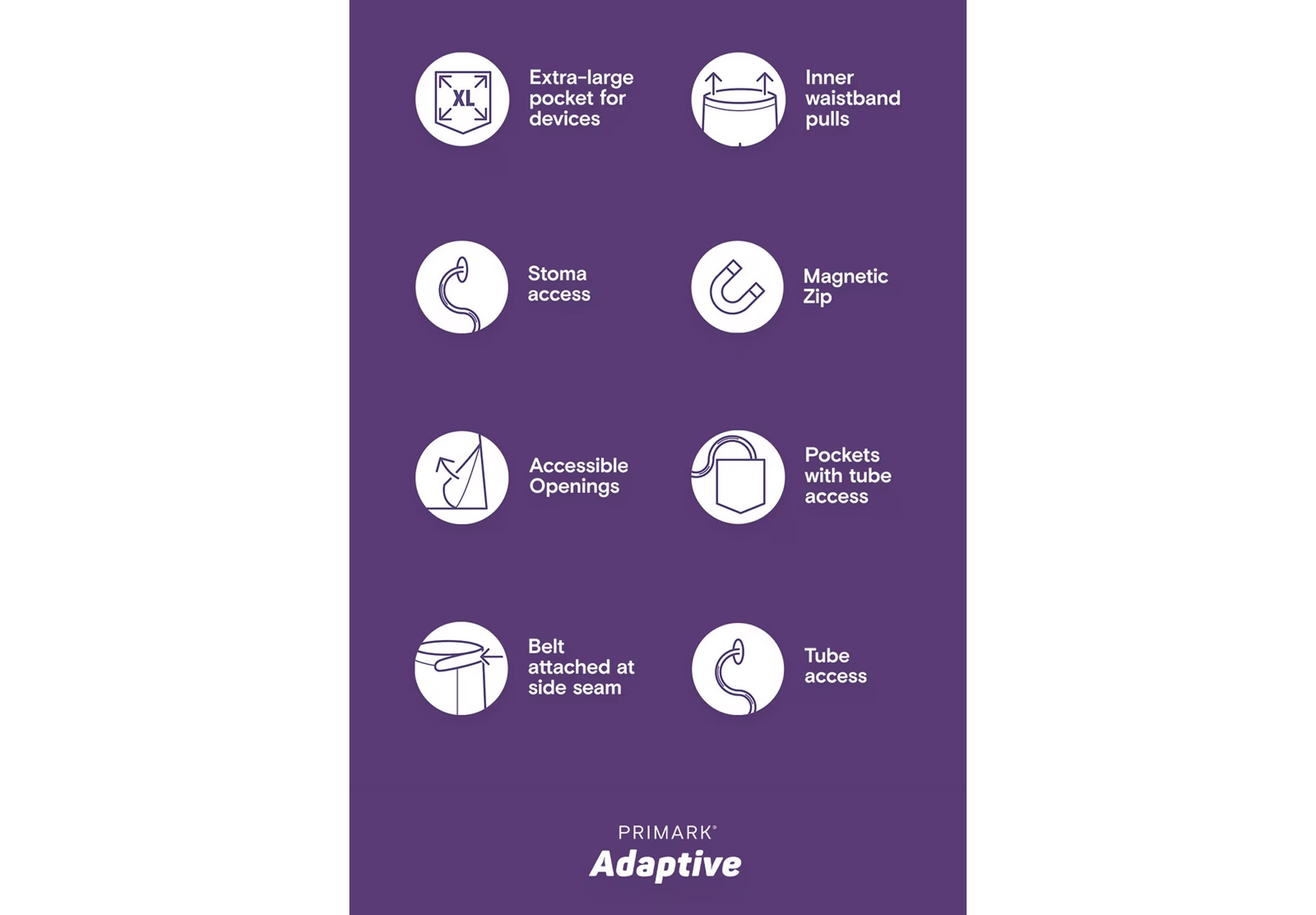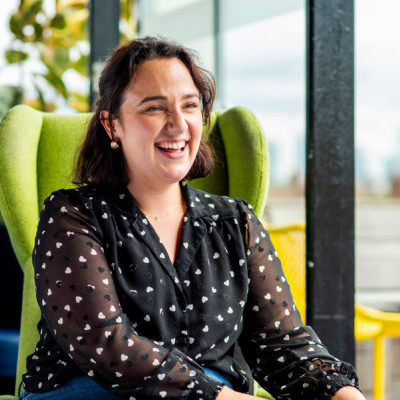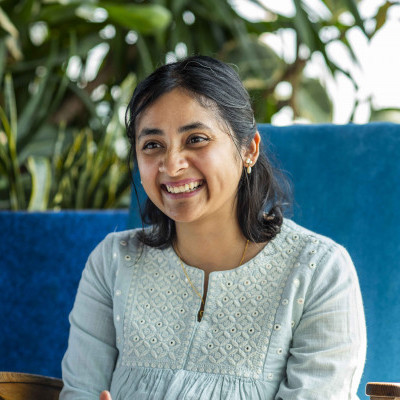Building a more inclusive and sustainable fashion industry for everyone
The fashion industry faces growing pressure to make clothing that is both inclusive and sustainable. Our team collaboratively discuss and address some of the key advancements from retailers, and how these adaptive ranges and sustainable practices offer blueprints for transforming fashion into a responsive ecosystem.
We have seen the huge success of Primark’s new adaptive clothing range, following last year’s launch of adaptive women’s underwear. This is a significant accomplishment by a high street business in making fashion accessible and affordable for disabled people. The 49-piece womenswear and menswear capsule collection was developed in collaboration with disabled people and features innovative and practical designs including magnetic zippers and snap fastenings for people with limited dexterity, waist loops that help to pull up trousers and hidden openings for tube, stoma or catheter access. There are also items available for both seated and standing people, offering equal access to pieces in the collection.
At Naidex 2025, Primark stated that this collection is only just the beginning, and the work of the retailer exemplifies how thoughtful design can meet diverse requirements without compromising on style.

The sustainability paradox
Despite this, Primark’s journey into adaptive fashion is not without its contradictions. As a fast fashion retailer, the brand has long faced scrutiny over its supply chain transparency, environmental impact, and labour practices. Although initiatives like the “Sustainable Cotton Programme” and a pledge to halve carbon emissions by 2030 highlight attempts at aiming to improve sustainability, persistent concerns about low wages and poor working conditions suggest that the fast fashion model is hard to reconcile with ethical production.
Brands such as Patagonia set the benchmark for sustainability and ethical supply chains. Patagonia’s commitment to transparent sourcing, fair labour practices, durable materials, and repair and reuse initiatives makes it an exemplar of what responsible fashion can achieve. However, its higher price points mean that its offerings remain out of reach for many consumers, highlighting an accessibility gap.
Comparing approaches
Here’s how Primark and Patagonia compare in terms of adaptive clothing, sustainability, and ethical practices:
Aspect | Primark | Patagonia |
Business Model | Fast fashion, low-cost, high-volume production | Premium outdoor apparel, durable and repairable |
Sustainability Approach | Focus on affordability while integrating sustainability efforts | Ethical sourcing, recycled materials, repair and reuse programs |
Adaptive Fashion | Recent launch of an adaptive range (e.g. magnetic zips, stoma access, tube access) | No dedicated adaptive range |
Material Sourcing | By 2027, Primark wants all the cotton in their clothing to be organic, recycled or sourced from the Primark Cotton Project (formerly the Primark Sustainable Cotton Programme). | Uses organic cotton, recycled nylon and other materials, and responsibly sourced wool - see full list |
Labour & Ethics | Supply chain transparency improving, but challenges remain in fair wages and working conditions | Fair Trade Certified factories, living wages, and strong worker rights policies |
Carbon Footprint | Goal to halve emissions by 2030, investment in greener shipping | Already a carbon-neutral business, invests in regenerative agriculture |
Affordability & Accessibility | Affordable for a wider consumer base | Higher price point, making it less accessible to budget-conscious shoppers |
Longevity & Durability | Fashion-forward designs, but durability is a concern | Products designed to last decades, with repair & resale options |
This comparison reveals the core challenge: must we choose between making clothes accessible and ensuring they're produced ethically and sustainably?
Fortunately, some brands prove this isn't an either-or choice. Dry Robe, while perhaps more functional than traditional fashion, demonstrates how companies can integrate both values from the ground up. Their product development process actively involved disabled people (like co-author Natasha Davies), ensuring genuine inclusivity while maintaining their commitment to sustainable practices. Similarly, Lucy and Yak has partnered with Unhidden to develop clothing that works for both seated and standing users, all while upholding responsible and sustainable production standards. These collaborations show that inclusive design and environmental responsibility need not be mutually exclusive when brands prioritise authentic engagement with disabled communities alongside their sustainability commitments.
This comparison reveals the core challenge: must we choose between making clothes accessible and ensuring they're produced ethically and sustainably?
Reimagining fashion as an ecosystem
Primark's adaptive range and Patagonia's sustainable practices offer blueprints for transforming fashion into a responsive ecosystem. While Primark focuses on accessibility through adaptive design, Patagonia focuses on environmental stewardship through its circular business model, repairing, reusing, and recycling garments to extend their lifecycle and minimise waste.
Adaptive fashion shows us how to build our own approach to accessibility, inclusivity, and sustainability. Rather than seeking one perfect solution, we can recognise that multiple frameworks can work simultaneously, each addressing different needs. The goal isn't following existing standards, but expanding possibilities. This requires building confidence to innovate continuously, not just creating one successful collection, but developing the determination to keep learning and improving how we serve people through inclusive design.
How might we transform the traditional linear approach of fashion design into a more interconnected, empathetic ecosystem?
When brands like Primark launch their adaptive range, the conversation should not be stopping at the clothing itself, but designing the whole experience. Everyone should experience the same excitement of a complete shopping and outfit curation experience. Both in physical stores and digital platforms.
Key questions emerge:
- Do adaptive collections receive the same styling support as regular lines?
- Can customers see complete outfits instead of isolated pieces?
- Are we providing consistent diverse representation across all marketing channels, not just during launches?
How might we transform the traditional linear approach of fashion design into a more interconnected, empathetic ecosystem?
The cultural shift
Fashion has never been about just clothing. It's about identity, expression, and belonging through style and mindful choices. By supporting multiple design approaches, we're not just making clothes accessible; we're challenging cultural assumptions about bodies, ability, style, and choice.
Rather than providing ready-made answers (since every brand operates differently), we aim to inspire holistic thinking and help communicate that vision.
Questions to consider:
- How can we give all customers equally good shopping experiences, no matter their needs?
- How might your company see design as an ongoing, collaborative process?
- What if we combined Patagonia's environmental focus with the accessibility approach of brands like Primark's adaptive range?
At Mima, we don't believe accessibility and sustainability have to compete with each other. From our perspective in accessibility, inclusive design, and experience design, we see this tension as an opportunity for innovation. The principles we apply in other sectors suggest there are untapped possibilities for fashion brands willing to think differently about these challenges.
Behind the scenes reading:
- Pullin, G. (2009). "Design Meets Disability". MIT Press.
- Sanders, E. B. N., & Stappers, P. J. (2008). "Co-creation and the new landscapes of design". CoDesign Journal.
- Norman, D. A. (2013). "The Design of Everyday Things". Basic Books.
- Hamraie, A. (2017). "Building Access: Universal Design and the Politics of Disability". University of Minnesota Press.
- Patagonia Annual Benefit Corporation Report. Fiscal Years 2023-2024
- Primark Sustainability and Ethics Progress Report 2023-2024
Written by:

Lisa Baker
Head of Experience Design & Sustainability
Lisa is a Chartered Human Factors Specialist with 18 years of experience across various industries, including healthcare, transport, culture and heritage. Lisa specialises in bridging human factors and service design to create innovative and sustainable customer services and experiences, grounded in evidence.

Natasha Davies
Principal Accessibility and Inclusive Design Consultant
Natasha is an NRAC accredited Access Consultant. She has worked on a broad range of accessibility projects for organisations based in the UK and internationally, helping clients to implement inclusive design solutions. Her previous project experience includes working with historic buildings, art galleries, office spaces, sports centres and mixed-use development schemes.

Mel Barber
Accessibility and Inclusive Design Consultant
Mel delivers technical, holistic design solutions within the built environment, with recent experience on Oxfordshire Community Rail (Station Based Calm Spaces) and Gatwick Airport. Mel provides realistic accessibility recommendations, balancing client aspirations with user experience. She works collaboratively to enhance creative outcomes through inclusive, project-specific thinking.

Divya Charlie
Service Designer
Divya is a creative service designer and researcher with experience in participatory design and community-culture projects. Divya explores the human and place based connections across diverse experiences and perspectives, driven by innovation for well-being. She believes that the best solutions emerge through people engagement in collaborative and shared vision environments.